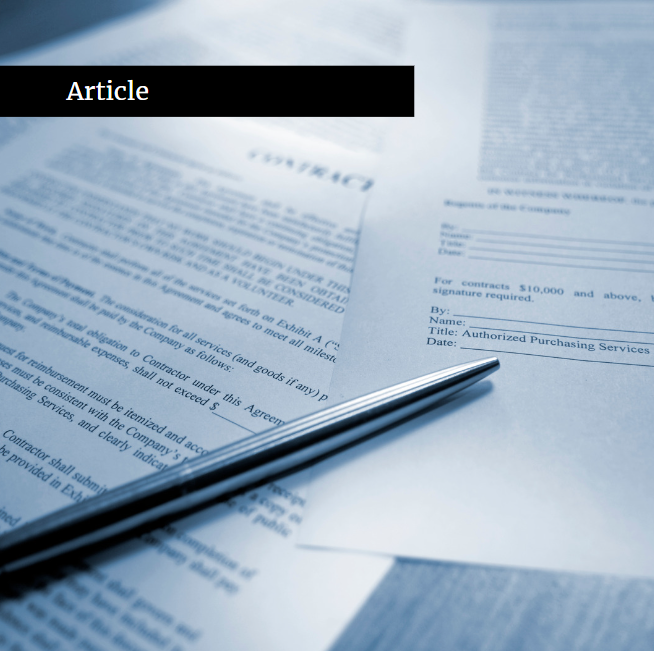Once again, a maritime accident has come to the attention of the international community
Once again, a maritime accident has come to the attention of the international community.
One of the world’s largest container ships, with around 20,000 TEUs on board, has grounded in the Suez Canal, which is one of the most important and sensitive geographical points of global maritime traffic, with huge repercussions on the markets as it has forced many other ships to stop because they cannot transit through such a strategic passage and others to modify their initial routes, which has even led to a rise in the price of oil. Fortunately, the EVER GIVEN has now been removed, and traffic in the Canal, now resumed, is expected to return to normal in the next few days. Until the successful removal, according to the latest reports, there were more than 400 vessels trapped on both sides of the Canal in the area.
From afar, various hypotheses have been put forward as to the causes of the accident: strong winds and the “sail” effect of the ship’s structure? engine failure, with the consequent loss of control of the ship? human error? or, why not, the effect of interaction in narrow waters?
Depending on the final cause of the accident, the liabilities of ones or the others will arise, being the liability derived from the accident, although not the only one, one of the most important issues that will arise from it, since an infinite number of claims are foreseen. That is to say, depending on the accident, it will be the liability of the Master and its owner and/or shipowner of the vessel, or of the Suez Canal administrator or the pilots, who are the real experts on the canal.
Potential liabilities for delays and damages of the goods in the execution of the carriage by the EVEN GIVEN and rest of ships concerned.
The potential liabilities both for damages to the goods and delays in their delivery must be analyzed not only from the perspective of the EVER GIVEN in connection with its shippers and/or consignees, but also from the perspective of those ships “trapped” in the Suez Canal, which obviously also had their commitments, or those carriers forced to deviate from their original routes in the execution of their respective agreed transports. Logically the EVER GIVEN grounding has caused and is causing not only potential damages to the cargo, but also considerable delays in both cases.
Although Hague-Visby Rules, to which Spain is a State Party, do not expressly contain a general principle of carrier’s liability, from their provisions a liability regime for presumed fault -with a reversal of the burden of proof – of the carrier for
loss and damage to the goods in the (un)fulfilment of its contractual obligations as carrier it is deducted; establishing the Rules some exceptions (art. 4) for which the carrier shall not be liable for such loss or damage.
In this regard, in order for the carrier to exculpate himself on the basis of any of said exceptions, it shall be necessary that (i) the event giving rise to the loss or damage is not caused by the carrier’s breach of the initial obligation of seaworthiness, and (ii) that the carrier proves one of the exceptions of art. 4.2 and its causal link with the loss or damage.
Given the different possible causes of the grounding of the EVER GIVEN as the event triggering the potential loss or damage to the goods (causes of the triggering event which will not be the same for the EVER GIVEN as for the other ships concerned), some of the potential exculpatory exceptions would be the «act, neglect, or default of the master, mariner, pilot, or the servants of the carrier in the navigation or in the management of the ship» (letter a), or «Perils, dangers and accidents of the sea or other navigable waters» (letter c) for the EVER GIVEN or «force majeure» (letter d), among others, for the other ships concerned.
In the event the claims succeed, and unless the value of the goods has been declared and inserted in the bill of lading, the carrier would be in principle entitled to the benefit of a limitation of liability not exceeding in any case 666.67 units of account per package or unit, or two units of account per kilogramme of gross weight of the goods lost or damaged, whichever is higher. This unless the damage resulted from an act or omission of the carrier done with intent to cause damage, or recklessly and with knowledge that damage would probably result, which in such case the carrier shall loose said benefit of limitation of liability.On the other hand, the Hague-Visby Rules only address the liability of the carrier for loss or damage of the goods. However, the Spanish Maritime Navigation Act (MNA) expressly includes the delay in the delivery of goods within the scope of carrier’s liability regime. In this regard, «delay in delivery exists when the goods are not delivered to the destination by the deadline agreed, or failing that, within a reasonable term that may be demanded according to the circumstances of the fact» (art. 280 MNA).
As far as the limitation of the carrier’s liability for delay is concerned, this would be «limited to a figure equivalent to two and a half times the freight payable for the goods affected by the delay, but it shall not exceed the total amount of the freight that must be paid by virtue of the charter party».
Finally, in the event of concurrent compensations for damage and delay, the accumulation of both should be limited to the figures established to limit liability for loss or damage.
On the potential limitation of liability for maritime claims.
In view of the flood of potential claims arising from the grounding of the EVER GIVEN, depending on the jurisdiction in which those claims heard, the ship could limit its liability for maritime claims.
Internationally, there are a number of Conventions that regulate the limitation of liability for maritime claims. Among them, the most frequently applied is the Convention on Limitation of Liability for Maritime Claims, done at London on 19 November 1976, and its Protocol of Amendment, done at London on 2 May 1996 (LLMC/76/96).
The key for the application of this Convention is the nationality of the Court in a State Party, so that the nationality and domicile of the creditor and the debtor, as well as the flag flying the ship, in this case Panama -which is not a State Party-, would lose importance.
With regard to claims that may arise from maritime claims, in general these could be both contractual and non-contractual claims. Provided that no intent or recklessness is proved in the ship’s accident, owners (the owner, the charterer, the ship manager) may limit their liability under LLMC/76/96. Invoking said limitation of liability does not constitute an admission of liability, and the maximum sums for maritime claims would amount to a figure of around SDR 81.5 million.
On the potential liability of the Suez Canal Authority and the actions available.
One of the potential liabilities that should be analysed, with the information currently available to us, is that of the Suez Canal Authority. Let us see who this Authority is: the Suez Canal Authority, an independent state entity that owns the Suez Canal and is in charge of its management and maintenance, was created by Egypt to replace the Suez Canal Company in the 1950s, after the Suez crisis. This state-owned Authority manages, operates, maintains and monitors the Suez Canal, which could make it liable to the owner/charterer and cargo interests of the EVER GIVEN, as well as to the other ships affected by this incident.
Law No 30 of 1975 states that the Suez Canal Authority shall operate, maintain and optimise the facilities of the Suez Canal. Its duties also include regulating access to and navigation through the Canal (in compliance with the Constantinople Convention). In fact, the Suez Canal Authority has specific navigation rules published and approved by its Board of Directors in 2015.
If we take these parameters into account, the liability of the Suez Canal Authority could also be analysed either for deficient dredging of the Canal, for deficient maintenance of the Canal – to which it is obliged – or for inadequate management of the situation. Given that, according to Law No. 30 of 1975, the Suez Canal Authority is responsible for the management and operation of the Canal (in exchange for considerable fees), decisions such as not having prevented the entry of some of the almost 400 ships that were directly trapped in the Canal could have aggravated or lessened the economic consequences of the incident: it would have to be analysed whether the decision to suspend navigation through the Canal should have been taken earlier. Even if the sandstorm was foreseeable and significant, should the EVER GIVEN have been advised to avoid further passage through the canal, and are the canal ports prepared for the urgent entry of these mega container ships? Given that the Egyptian Government requires ships passing through the Suez Canal to have ‘Suez crew’ on board, i.e., one or more pilots belonging to the Suez Maritime Authority, what influence did the actions of the pilots who report to the Suez Maritime Authority have on the incident?
However, the Suez Canal Authority could not only be liable but could also be a claimant against the shipping company/ship: if it is finally proven that the ship was responsible, the Suez Canal Authority could claim damages from the Suez Canal Authority for, among other things, having the Canal closed to maritime traffic for almost a week, at a rate of between 14 and 15 million US dollars per day. This leaves aside the eventual penalty that the Suez Canal Authority is likely to impose on the ships.But, as indicated, for the moment these are all hypotheses and until the main question is resolved, which is none other than what caused the EVER GIVEN to run aground, there is only room for a theoretical analysis of the potential legal implications of the incident.
On the potential liability of the pilots.
Regarding the potential liabilities of the pilots, in some legal systems the pilot’s work is configured as that of an advisor to the master, as is the case in Spain with the LNM – where the presence of the pilot does not exempt the master from liability, although the damages and accidents due to inaccuracy or omission that the pilot must provide to the master will be imputable to the master – although there are other legal systems in which the pilot assumes the direction of the manoeuvre of the ship being towed. It will therefore depend on the configuration of the pilot’s task in the applicable law as to how the pilot’s liability is configured. In the transit of a channel, at a speed lower than the usual speed in open waters, but higher than the speed used in port waters, the pilot’s knowledge of the channel becomes essential, as he is the one who knows the area and its peculiarities in detail, to the extent that his advice in practice can be understood as real orders, as it is the pilot who has the punctual and updated knowledge of the channel waters, its bottom, the influence of currents, flow, tides, the effect of interaction.
Conclusions.
We understand that both the Panamanian and Egyptian maritime authorities have launched an investigation into the incident in order to determine the cause of the incident and to determine who is responsible.
For the rest, it remains to be seen in the coming days whether the companies that have managed to refloat the ship will claim the costs of the operation or, where appropriate, the salvage compensation from all those involved in the voyage, or whether, on the contrary, the shipping company EVERGREEN will pay these costs and claim them from the other parties involved via general average.
Authors: Diego de San Simon, Carlos Cerda, Mercedes Duch, Luis de San Simon
lsansimon.com
(1).png)
Download file...
(2).png) Rising to the challenges of war2023.10.20
Rising to the challenges of war2023.10.20...

Anupam Mittal v Westbridge Ventures II Investment Holdings [2023] SGCA 1 highlights the importance of expressly stating the law governing...
.png)
Structure Are there any particular drivers in your jurisdiction that will determine how a joint venture is structured? ...
(1).png) Release: Shipping nd trade day 20222022.12.22
Release: Shipping nd trade day 20222022.12.2250 countries and 257 delegates: that is Shipping and Trade Day 2022 in a nutshell. Let us highlight our annual conference in detail....

For several weeks, the Ukrainian and world media have been discussing the plan for recovery of Ukraine, as called by journalists and econo...

Odessa businesses, as the Lviv ones, have the most problems with logistics and decreased purchasing power of the population, while the o...

Today, the world faced impact of technological evolution, which affected both management and production processes, as well as new method...

To maintain macroeconomic stability and win this war, all of us need to work together. Ukraine’s economy is suffering colossal losses...
 Ukrainian Legal Alert (17.02.2022)2022.02.17
Ukrainian Legal Alert (17.02.2022)2022.02.17There is a high concern issue on the agenda of the international community these days, which has arisen out of the possible escalation of Uk...



 Odessa, 65014, Ukraine, 1 а, Gretska St
Odessa, 65014, Ukraine, 1 а, Gretska St
